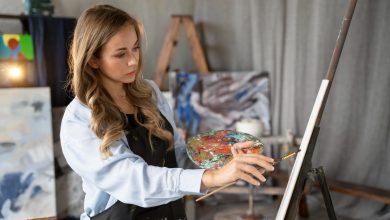Art Restoration | What is Art Restoration

The Art Restoration ensures the conservation of works of art. Also paintings, furniture, and fabrics. The desire to extend the lifespan. And repair or rebuild a movable and immovable property. That already existed in antiquity. It has long been customary to complete missing parts or even to transform goods to adapt them. To the aesthetic codes of the time or to new uses. The restoration of the cultural property began to take shape. And became a “discipline” during the 20th century at the international level. With the adoption of a code of ethics based on respect for cultural property and in particular for its physical integrity. and their heritage interest. Main activities of Art Restoration
Let’s talk about Art Restoration. The restorer of works of art specializes in the repair of monuments. And old objects like historic buildings, sculptures, paintings, tapestries, clocks, jewelry, ceramics, stained glass, furniture, and photographs. To repair them or restores their initial appearance. Taking care to preserve their physical and historical properties. It is an advanced technology to check the state of conservation of the object of collection. To choose the technique best adapted to its restoration. It schedules the duration of the work necessary to return the works to their original state. It needs to clean the objects, scratches their surface, and reconstruct missing parts. Using ancient techniques that the restorer has been able to study. For example, the restoration of the facades, roofs, and galleries of the Cour d’honneur of the Invalides. Currently, underway is a 4-year project which should be completed in the summer of 2018.
Where does it practice?
The clientele can be public: Local authorities, public establishments, decentralized or decentralized State services call on art restorers. This is also the case for individuals, galleries, merchants, antique dealers, and auction houses. Some art restorers are civil servants in public establishments such as museums. For example. A large part of the interventions is carried out in museums. Historical monuments, and archives services. Others can take place in the workshops of the Center for Research and Restoration of French Museums (C2RMF). The Interdisciplinary Center for Heritage Conservation and Restoration (CRP). According to the Institute of Crafts, In the state civil service. They are employed as heads of works of art (category A). Or art technician (category B). Rare positions are also possible. In the research bodies of the Ministry of Culture, in particular that of study engineers. In the territorial public service. They are recruited as heritage conservation attaches or assistants.
Required qualities
Particularly in the field of archives, positions that come under the cultural sector. Skills to be an Art Conservator.
Clever: The art restorer recreates whole parts of damaged objects. He shows great skill so that the retouching is not visible.
Careful: It handles fragile parts. You have to be careful not to further damage objects in poor condition.
Expertise
- Define the stages of intervention for the shaping or decoration of an object
- Clean a surface to be decorated or covered
- Disassemble an object
- Draw decorations
- Reproduce a pattern on an article by hand
- Apply a product, a treatment
- Carry out a surface polishing operation
- It Carries out a sanding operation
- Carry out a waxing operation
- Mount pieces of decorations, ornaments
- Packaging a product
- Record the sale of an item
- Apply patterns, surface coatings to arts and crafts
- Restore graphic works
- Restore sculptures
- It restores paintings
- Restore frames
- Reproduce a decor in small series using block printing techniques
- Report or reproduce a decoration in small series using handmade paper techniques
- Painting decorations with a brush
- Determine the components of a tint, color
- Manufacture paints, lacquers, enamels
- Carry out aging operations on a structure (cracks, scratches, etc.)
To know
- Drying procedures (temperature, duration, …)
- Drawing techniques
- Masking processes
- Net painting
- Sketch tracing
- Manual abrasion
- Encryption / cost calculation
visit: wishpostings




